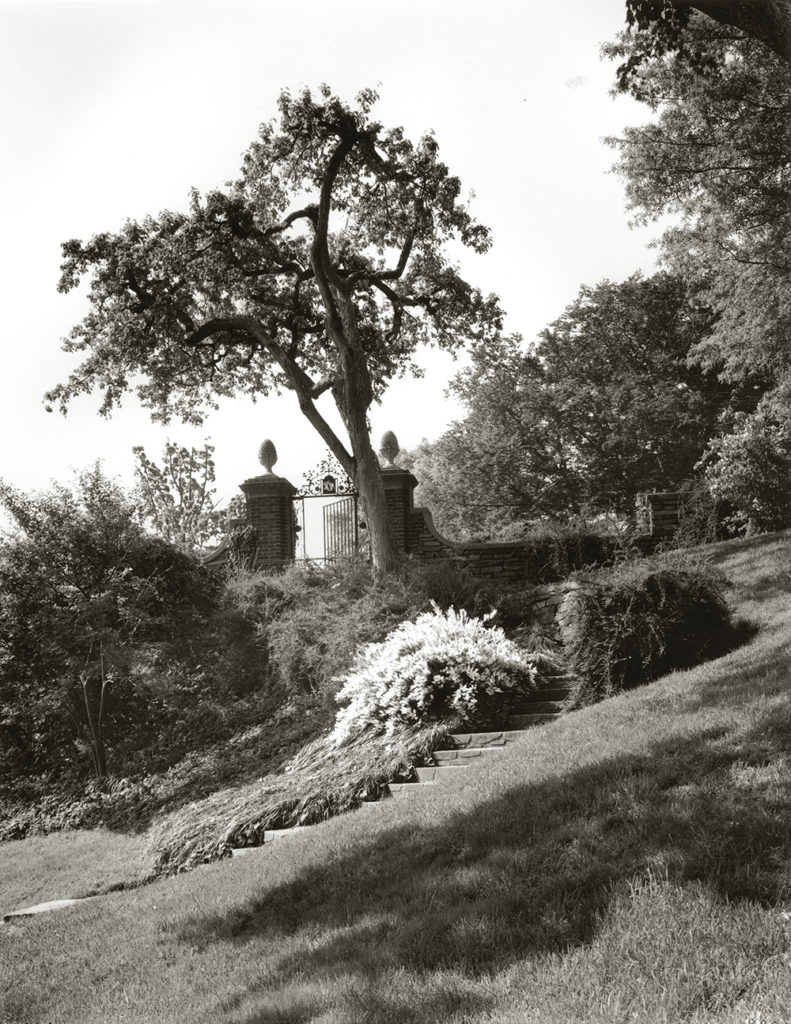
When Mildred and Robert Woods Bliss commissioned Beatrix Jones Farrand (1872–1959) to design a garden for their new fifty-four-acre Georgetown property, Farrand was one of the country’s most acclaimed landscape architects—Mrs. Woodrow Wilson and Princeton University figured among her prominent clients. Farrand’s diverse training included a horticultural apprenticeship with Charles Sprague Sargent, founder of Harvard’s Arnold Arboretum, and exposure to Italian design principles through her aunt Edith Wharton, author of Italian Villas and Their Gardens (1904).
At her initial visit to The Oaks in 1921, Farrand saw great potential in the sharply sloping site. On the spot, she imagined terraces amid the giant trees, connected by paths, arbors, and flights of stairs. She saw an innovative plan based in Plattian geometry but hilly and enlivened with bold, curving paths. Plantings would emphasize the hillsides and curves: cascades of yellow forsythia; curtains of weeping willow; great cushions of boxwood. “You have got it exactly!” Mildred Bliss wrote in answer to Farrand’s first ideas about the project.
Their correspondence reveals a quick growth in intimacy and sense of shared passion about the garden they would work on together for almost twenty years. When the Blisses were abroad, drawings of proposed features and snapshots of plywood mock-ups followed them for review. Literally thousands of sketches bearing Mildred Bliss’s comments chronicle her deep involvement in the project.
Dumbarton Oaks is a singularly sequential garden, conceived and designed much like a piece of music. In fact, Farrand was a talented singer and had considered a career in music. She was also an inventive designer of landscape scene and setting. From the tautly elegant rose terrace to the richly planted woodland that lies north of the home grounds (now a National Park Service property), each garden at Dumbarton Oaks strikes a different narrative chord. Soaring views throughout unify these differences, lifting attention beyond the charm of bower and bloom, toward the larger transcendent force of the genius loci.
Design by Beatrix Farrand, c. 1922.
SITE INFO
Dumbarton Oaks (estate of Mildred and Robert Woods Bliss)
1703 32nd Street, N.W.
Washington, D.C. 20007
202-339-6401; fax 202-339-6419
www.doaks.org